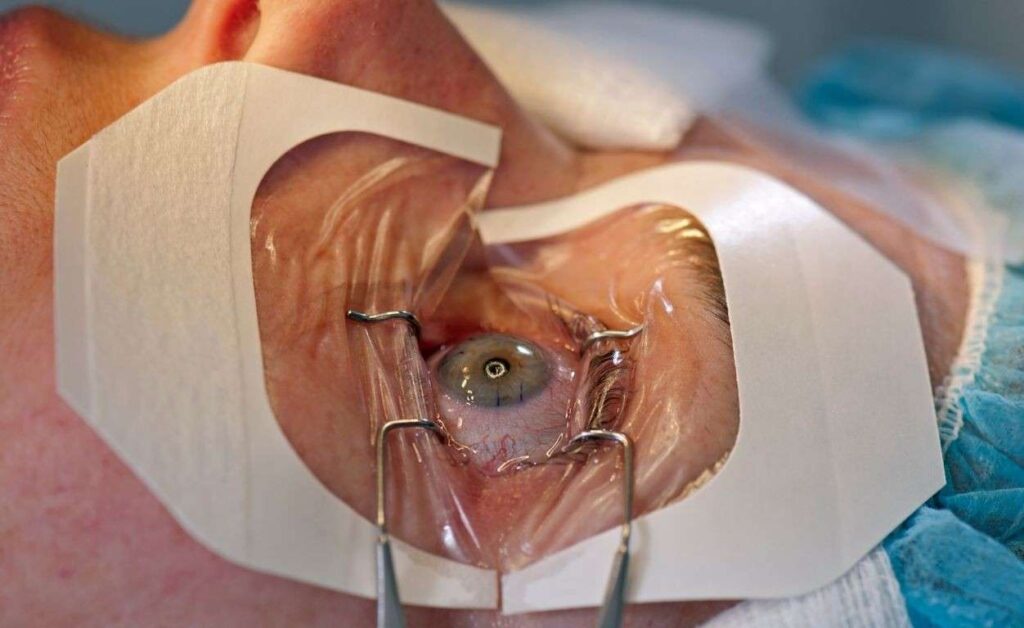LASIK eye surgery is a popular procedure that helps individuals improve their vision and eliminate or reduce the need for glasses or contact lenses. If you’re considering LASIK, it’s important to have a thorough understanding of what it involves, from the pre-surgery preparation to the post-surgery care and potential risks. This ultimate guide will provide you with all the important information you need to know before making a decision.
Understanding LASIK Eye Surgery
LASIK, which stands for Laser-Assisted In Situ Keratomileusis, is a refractive surgery that aims to correct common vision problems such as nearsightedness (myopia), farsightedness (hyperopia), and astigmatism. By reshaping the cornea, the transparent front part of the eye, LASIK can improve visual acuity and reduce or eliminate the need for corrective lenses.
Before undergoing lasik eye surgery, patients typically undergo a comprehensive eye examination to determine their suitability for the procedure. Factors such as corneal thickness, pupil size, and overall eye health are assessed to ensure the best possible outcome. It is essential for individuals considering LASIK to have stable vision for at least a year before the surgery to ensure accurate results.
What is LASIK Eye Surgery?
LASIK eye surgery involves the use of a specialized laser to reshape the cornea. During the procedure, a microkeratome or femtosecond laser is used to create a thin flap on the cornea’s surface. The flap is then lifted, and the underlying cornea is reshaped using an excimer laser. Finally, the flap is repositioned, serving as a natural bandage.
The entire LASIK procedure is typically quick, with most patients experiencing improved vision almost immediately. While some individuals may feel mild discomfort or experience temporary dryness in their eyes after the surgery, these symptoms usually subside within a few days. It is crucial for patients to follow post-operative care instructions provided by their eye surgeon to ensure proper healing and optimal results.

The Science Behind LASIK
The cornea’s shape determines how light is focused on the retina, forming clear images. In individuals with vision problems, the cornea’s curvature is irregular, leading to refractive errors. LASIK corrects these errors by removing precise amounts of corneal tissue, altering its shape and allowing light to properly focus on the retina.
Advancements in LASIK technology have led to more precise and customized treatments, enhancing outcomes for patients with varying degrees of refractive errors. Wavefront-guided LASIK, for example, uses detailed mapping of the eye’s unique imperfections to tailor the laser treatment specifically to each individual’s visual needs, resulting in improved visual clarity and reduced risk of side effects.
Read more at: LASIK Eye
Preparing for LASIK Eye Surgery
Before undergoing LASIK, it’s important to determine whether you are a suitable candidate for the procedure. Certain eligibility criteria need to be met to ensure the best possible outcomes.
LASIK, which stands for Laser-Assisted In Situ Keratomileusis, is a popular refractive surgery that can correct vision problems such as nearsightedness, farsightedness, and astigmatism. The procedure involves reshaping the cornea using a laser to improve how the eye focuses light onto the retina. This can result in reduced dependence on glasses or contact lenses for clear vision.
Eligibility Criteria for LASIK
To be eligible for LASIK, you must meet specific requirements. These may include having a stable vision prescription, being at least 18 years old, having healthy eyes free from infections or diseases, and not being pregnant or nursing.
Additionally, your eye surgeon will consider factors such as the thickness of your cornea, the size of your pupils, and the overall health of your eyes. These factors can affect the success and safety of the procedure, so a comprehensive evaluation is essential.
Pre-Surgery Consultation and Tests
Prior to the surgery, you will have a consultation with your eye surgeon to assess your eligibility and discuss your expectations. Various tests will be conducted to evaluate the health of your eyes and determine the appropriate treatment plan.
During the consultation, you will have the opportunity to ask any questions you may have about the procedure, recovery process, and potential risks. It’s important to be open and honest about your medical history and any medications you are taking to ensure the best possible outcome.
The LASIK Eye Surgery Procedure
During the LASIK procedure, several steps are followed to ensure precision and safety. Understanding the process can help you feel more at ease on the day of surgery.
Before the surgery begins, the patient will have a comprehensive eye examination to determine their candidacy for LASIK. This examination includes measuring the thickness and shape of the cornea, assessing the pupil size, and evaluating the refractive errors present. These details are crucial in customizing the treatment plan for each individual. Learn more about thickness at https://emsal.nanofab.utah.edu/thickness-measurement/
Step-by-Step Breakdown of the Procedure
The LASIK procedure typically follows these steps:
- Anesthetic eye drops are applied to numb the eyes.
- A microkeratome or femtosecond laser creates a thin corneal flap.
- The excimer laser reshapes the cornea by removing precise amounts of tissue.
- The corneal flap is repositioned.
- Post-surgery instructions and medications are provided.
After the surgery is completed, the patient will rest for a short period before being discharged. It is essential to have someone accompany them home, as their vision may be blurry immediately after the procedure. Follow-up appointments will be scheduled to monitor the healing process and ensure optimal visual outcomes.
Role of the Surgeon and Patient During Surgery
During LASIK surgery, the patient’s role is to follow the surgeon’s instructions, keep their eyes still, and remain calm throughout the procedure. The surgeon, on the other hand, is responsible for performing the surgery with utmost precision, ensuring the safety and well-being of the patient.
Communication between the surgeon and patient is key during the procedure. The surgeon may provide verbal cues to help the patient focus on a specific point of light while the laser is reshaping the cornea. This cooperation ensures accurate treatment delivery and enhances the overall experience for both the patient and the surgical team.
Post-Surgery Care and Recovery
After LASIK surgery, proper care and adherence to the post-surgery instructions are crucial for a smooth recovery and optimal visual outcomes. It is essential to follow the guidance provided by your ophthalmologist to ensure the best possible results and minimize the risk of complications.
During the initial recovery period, it is normal to experience some discomfort such as dryness, itchiness, or mild irritation in the eyes. These symptoms typically subside as the eyes heal, but it is important to report any persistent or worsening issues to your eye care provider.
Immediate Aftercare Following LASIK
Following the surgery, your eyes may feel dry and irritated. Your surgeon will provide you with specific instructions on how to use prescribed eye drops and protect your eyes during the initial healing period. It is crucial to follow these instructions diligently to promote proper healing and reduce the risk of infection.
Additionally, you may be advised to wear protective eyewear, such as sunglasses, to shield your eyes from bright light and dust particles during the early stages of recovery. Avoiding activities that could potentially strain the eyes, such as reading for extended periods or using electronic devices excessively, can also aid in the healing process.
Long-Term Eye Care Post-Surgery
While LASIK provides long-lasting vision correction, it’s important to take certain precautions to maintain eye health in the long run. Regular eye exams are essential to monitor the stability of your vision and detect any potential issues early on. Your eye care provider may recommend annual check-ups to ensure that your eyes remain healthy and your vision remains stable.
In addition to routine eye exams, adopting healthy lifestyle habits can contribute to the long-term success of your LASIK surgery. Eating a balanced diet rich in vitamins and antioxidants, staying hydrated, and getting an adequate amount of sleep can support overall eye health and function. Furthermore, protecting your eyes from harmful UV rays by wearing sunglasses outdoors and using computer glasses to reduce eye strain from prolonged screen time are simple yet effective ways to preserve your visual acuity. Click here to read more about antioxidants.
Risks and Complications of LASIK Eye Surgery
Although LASIK is generally safe and effective, like any surgical procedure, it carries some risks and potential complications. Being aware of these risks can help you make an informed decision.
Before undergoing LASIK eye surgery, it is crucial to understand the potential risks and complications that may arise. While the majority of patients experience improved vision without any issues, there is a small percentage that may encounter complications during or after the procedure. These complications can range from mild discomfort to more serious issues that may require additional treatment.

Common Side Effects and Complications
Common side effects of LASIK include dry eyes, glare or halos around lights, and temporary discomfort. In rare cases, more serious complications such as infection, corneal thickness issues, or vision changes may occur.
It is essential to discuss these potential side effects and complications with your eye surgeon during the consultation phase. Understanding the likelihood of experiencing these issues and how they can be managed will help you feel more confident and prepared for the surgery.
How to Handle Post-Surgery Complications
If you experience any complications after LASIK surgery, it’s important to immediately consult your eye surgeon. They will be able to evaluate your condition, provide appropriate treatment, and address any concerns you may have.
Additionally, following the post-operative care instructions provided by your surgeon is crucial in minimizing the risk of complications and ensuring a smooth recovery process. By adhering to these guidelines, you can promote proper healing and reduce the likelihood of experiencing any adverse effects.
By understanding LASIK eye surgery, preparing for the procedure, following proper care post-surgery, and being aware of potential risks, you can make an informed decision about whether LASIK is the right choice for improving your vision. Remember to consult with a trusted eye surgeon who can guide you through the process and address any concerns you may have. Ultimately, LASIK has the potential to significantly enhance your quality of life by providing you with clearer, sharper vision.

